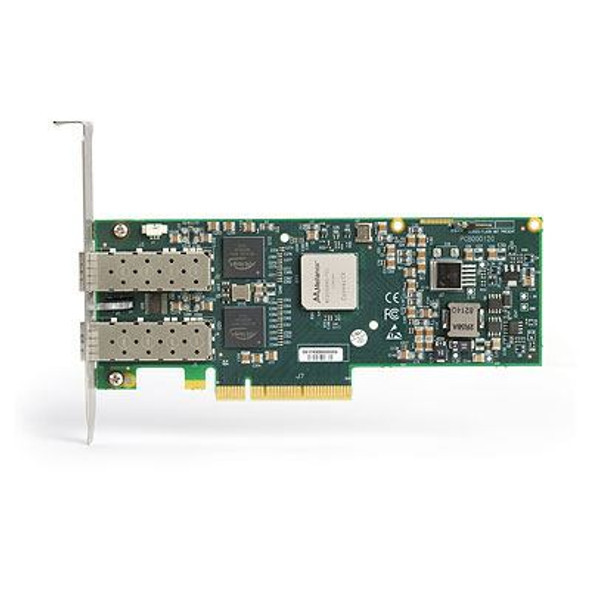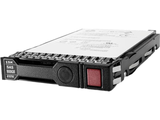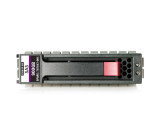Network Interface Card: A Definitive Guide
A network interface card (NIC) is one of the most crucial pieces of hardware that can be added to a computer. They’re important for a variety of reasons, and they play an integral role in helping your computer stay connected. If you don’t have at least one NIC installed on your machine, chances are it won’t be able to talk to other computers or access the Internet. But, what exactly is a Network Interface Card?
In this blog post, we'll explore why NICs are so critical for today's computing environment and dive into all the ins-and-outs of their functions and features. Whether you're building or upgrading your own system, curious about how your internet works or seeking answers from experts, keep reading!
What is a Network Interface Card?
A Network Interface Card (NIC) is an integral component of a computer that allows for communication between the machine and a network. Relying on either ethernet cables or wireless adapters, this device enables the sending and receiving of data from the computer, granting users access to the internet in addition to any other connected devices.
A NIC makes essential functions such as browsing, streaming, gaming, and VoIP communications possible with minimal fuss. It is also important to note that while most computers come with a pre-installed NIC, it is possible to add additional ones depending on the level of performance required by the user. Ultimately, a Network Interface Card remains an invaluable tool in allowing users to maximize their computing capabilities.
What are its functions?
Network interface cards (NICs), sometimes referred to as ethernet adapters, are a crucial component of any wired or wireless network. A NIC helps communicate data between computers by enabling the transference of information packets over the network, providing access to the internet and sharing resources.
Furthermore, it also allows users to connect more than one device that requires access to the same LAN or WLAN at the same time. Besides these basic functions, many advanced NICs can perform important system-level operations such as alerting network administrators when a problem is detected.
This can save time and money in terms of hard labor for maintenance and repairs since issues can be detected and corrected without human intervention. No matter what configuration is needed on your home or office local area network, Network Interface Cards will come in handy for reliable communication across multiple devices.
What Are the Components of Network Interface Cards?
A Network Interface Card (NIC), also known as a network adapter or network storage adapters, is a hardware component that connects a computer or other device to a network. The main components of a NIC are:
- Connector - A connector is used to physically connect the NIC to the network. The most common connector types are RJ-45 for Ethernet networks and BNC for coaxial cable networks.
- Controller - The network controller is the main component of the NIC, which manages the communication between the computer and the network. It is responsible for encoding and decoding data, as well as error detection and correction.
- Memory - The NIC has a small amount of memory that is used to buffer data before it is transmitted or received. This helps to ensure that data is not lost or corrupted during transmission.
- Driver - A NIC driver is a software program that allows the operating system to communicate with the NIC. It provides the necessary instructions to control the NIC and transfer data to and from the network.
- Processor - Some high-end NICs may also have a built-in processor, which can offload some of the processing tasks from the computer's CPU, improving performance and reducing network latency.
Types of Network Interface Card
There are several types of Network Interface Cards (NICs) available in the market, each with its own specific features and capabilities. Some of the most common types of NICs include:
- Ethernet NIC - Ethernet is the most widely used networking standard, and Ethernet NICs are the most common type of NIC used in personal computers, servers, and other devices. They typically use twisted pair cables with RJ-45 connectors to connect to the network.
- Wireless NIC - Wireless NICs, also known as Wi-Fi adapters, allow devices to connect to a wireless network. They use radio waves to transmit and receive data, and can be either integrated into the device or added as a separate component.
- Fiber Optic NIC - Fiber optic NICs use fiber optic cables to transmit data over long distances at high speeds. They are often used in data centers and other high-performance computing environments.
- Token Ring NIC - Token Ring was an older networking standard that used a token passing protocol to manage access to the network. Token Ring NICs are no longer widely used, but some legacy systems may still require them.
- Modem - A modem is a type of NIC that allows devices to connect to the internet over a telephone line. They are not as common as they once were, as most internet connections are now made using broadband technologies.
- InfiniBand NIC - InfiniBand is a high-speed networking standard used in high-performance computing environments, such as supercomputers and data centers. InfiniBand NICs are designed to handle extremely high data transfer rates.
How to Select the Right Network Interface Card
When choosing a Network Interface Card (NIC), there are several factors to consider to ensure that the card meets the specific needs of your network and device.
Here are some tips to help you choose the right NIC:
- Determine the speed requirements - The speed of the NIC is an important factor, as it determines the maximum data transfer rate. Consider the network speed and bandwidth requirements of your network, and choose a NIC that can handle the required speed.
- Consider the network type - Different NICs are designed for different types of networks, such as Ethernet, Wi-Fi, or fiber optic networks. Make sure to choose a NIC that is compatible with your network type.
- Compatibility -: Check that the NIC is compatible with your computer or other device. Consider the form factor of the card and whether it will fit into your device.
- Check the number of ports - Some NICs have multiple ports, which can be useful for connecting to multiple networks or for load balancing. Consider the number of ports required for your network.
- Brand and quality - Choose a reputable brand and high-quality NIC to ensure reliability and performance. Look for certifications, such as IEEE or RoHS, which ensure that the card meets specific standards.
Looking For Quality Network Interface Cards? Storage Parts Direct Is Here
With a Network Interface Card, users get the immense benefits of increased data transmission speeds, providing better networking performances. Investing in an appropriate NIC is essential for improved network performance and reliability.
If you’re looking for a quality selection of NICs for your business or organization, Storage Parts Direct is your go-to source to ensure you have access to the best NIC and storage devices solutions on the market today.
With their wide variety of products from trusted manufacturers, Storage Parts Direct has all your network interface needs covered quickly and reliably. Don’t let outdated technology inhibit you; check out what Storage Parts Direct has to offer right now so you can move ahead with fast, secure connections!
Recent Posts
-
Powering Enterprise Workloads: HPE 900GB 15K RPM SAS-12Gbps Smart Carrier Drive for ProLiant Gen9 & Gen10
In today’s demanding enterprise IT environments, businesses require high-performance, reliable …Mar 3rd 2025 -
Unleashing Enterprise Power: HPE 900GB 10K RPM SAS-12Gbps HDD for High-Performance Storage
In enterprise storage solutions, reliability, performance, and scalability are crucial factors. The …Mar 2nd 2025 -
Power, Speed, and Reliability: The HPE 600GB 15K RPM SAS Drive for Enterprise-Grade Storage
Introduction In today’s fast-paced digital world, businesses require reliable, high-speed, and …Mar 1st 2025




